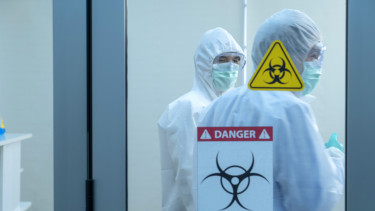Fourth wave could be rough and scary, infectologist urges restrictions

The number of new daily confirmed cases has started to rise in Hungary and in its neighbouring countries, as well, and this worries experts. The slow rise is still a rise, and the concentration of coronavirus in wastewater has also started to climb in three Hungarian cities.
Consequently, it needs to be considered what measures can be implemented to stop the Delta variant, said Szlávik.
Time out, hold that thought! Szlávik is obviously trying to remain neutral and politically correct, but cut the BS. Let’s not act surprised that the fourth wave is here and that it has come out of the blue. Experts have been sounding the alarm for months. The evidence was right there. There’s no conspiracy here. There’s no surprise. And we should equally not be surprised by the conscious and deliberate ignorance shown by authorities. The economy must function, people must go on with their lives, right? As Covid numbers in the third wave showed a convincing improvement (fewer new cases, fewer people in hospitals, ICUs and morgues) pandemic-related restrictions started to be lifted until there was none at all. And here we are. The numbers are going up again, and NOW we should start thinking about how to combat this? Really? What about the lessons learned from the previous three waves? Total lockdown implemented as a response to the outbreak last spring allowed Hungary to weather the storm at a low cost. Then everything went awry. Inferior testing, the lack of a functioning surveillance system, no contact tracing and belated responses in general made Hungary a world leader in COVID-19 deaths per population (until Peru took over). And life in Hungary continues to go on as if everything is hunky-dory. Well, everything is not. For one, mask-wearing indoors should have been made compulsory again (or not ditched at all to begin with). But we all want to live life carefree, right? Secondly, testing is ridiculous. The 7-day average is 7,182 and the 14-day average is 6,947. Do you know how many tests Israel performs on a 7-day average? Nearly 123,000! And a four-day celebration is coming up entirely without restrictions, not to mention the start of a new school year in September, while less than 60% of the population is vaccinated against COVID-19 and only about a quarter of the 12-17 age group inoculated.
Szlávik noted that it is generally elderly people who end up in hospital now, but there are more and more young ones too among the newly infected. They can avoid hospital care as they generally do not have such severe symptoms, he added. He also warned that the coronavirus could start spreading at a faster pace once schools open.
Szlávik said those hospitalised are mostly unvaccinated. Very few people get infected three weeks or more after their second dose, and even if they do their symptoms will not be as severe. This applies to the Delta variant too.
It is difficult to say how severe illness the Delta variant causes, but
it is definitely more contagious, and it spreads more among young people because most of them are unvaccinated. Some cases in the United States suggest that it is more dangerous for young people.
He said the way to combat the fourth wave is not necessarily to close hotels, restaurants, and schools. There are other ways too, such as restrictions for unvaccinated people (i.e. making some services conditional to having an vaccination certificate).
There may be a point when mask-wearing will need to be made mandatory again. The Delta variant spreads as its predecessors, and it sometimes infects those that have already been inoculated. And in that case it is impossible to curb the spread any other way, warned Szlávik.
The fourth wave could be rough due to the high number of cases. It could be scary because there could be many cases, mostly young people. But from the aspect of hospitals I do not project such a load. This wave cannot be as the ones before
, he stated.
Szlávik stressed that the number of new COVID-19 cases has been rising and even though it remains low we cannot draw far-reaching conclusions and it may no longer be the case in September and October.
Cover photo: Getty Images.







